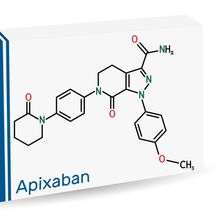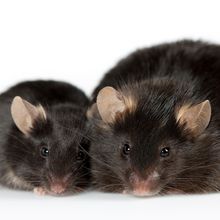Login
Subscribemicrobiology

How Intracellular Bacteria Hijack Your Cells
Catherine Offord | Dec 1, 2022 | 10+ min read
Scientists studying pathogens such as Chlamydia, Legionella, and Listeria get a master class in how to control the internal workings of mammalian cells.

Infographic: Intracellular Bacteria’s Tricks for Host Manipulation
Catherine Offord | Dec 1, 2022 | 2 min read
Various microbes, including several human pathogens, hijack the cell’s skeleton, membranes, and protein-making machinery to make themselves at home.

A Connected Community: The Rise of Microbiome Research
The Scientist | 1 min read
Explore how microbes shape health, disease, and the world beyond

Blood Thinner Ineffective for COVID-19 Patients: Study
Dan Robitzski | Nov 28, 2022 | 2 min read
A clinical trial finds that the anticoagulant apixaban, which has been prescribed to help COVID-19 patients recover, is ineffective and in rare instances dangerous.

Scientists ID Heart-Damaging SARS-CoV-2 Protein
Grace van Deelen | Nov 22, 2022 | 3 min read
In flies and mice, a viral protein increases the rate of energy use by heart cells. But it’s not yet clear if the finding applies to humans.

LabTalk Podcast - Bugs with Drugs: Repurposing a Pathogenic Bacteria’s Weapon
The Scientist | 1 min read
Cammie Lesser describes her research developing designer probiotics to deliver protein-based therapeutics to the gut.

Microbial Ecologist Alma Dal Co Dies in Diving Accident
Katherine Irving | Nov 21, 2022 | 3 min read
At 33, Dal Co had already founded her own microbial ecology lab at the University of Lausanne in Switzerland.

Climate Change, Deforestation Drive Bat Virus Spillover Into Humans
Amanda Heidt | Nov 17, 2022 | 4 min read
Bats that experience food shortages due to climate change and habitat loss end up roosting in urban settings, where they shed more of the deadly Hendra virus.

How Infectious Diseases Affect the Brain
The Scientist | 1 min read
From a loss of taste to dementia, infectious agents cause an array of neurological symptoms.

Archaea Sport Structures that Shuttle Genes Among Microbes
Natalia Mesa, PhD | Nov 16, 2022 | 3 min read
Researchers find so-called integrons, previously known only in bacteria, in their distantly related microbial relatives.

Leprosy Bacterium Rejuvenates Armadillos’ Livers
Alejandra Manjarrez, PhD | Nov 15, 2022 | 4 min read
Mycobacterium leprae appeared to reprogram the animals’ livers to a state partially resembling early development, resulting in healthy organ growth.

Securing the Antibody Supply Chain through Recombinant Antibody Technology: A COVID-19 Case Study
The Scientist Creative Services Team in collaboration with Sartorius Corporation | 1 min read
Nicholas Hutchings will discuss how recombinant antibody technology can speed up the response to a pandemic.

Chytrid Fungus Deploys Varying Strategies to Infect Amphibians
Tess Joosse | Nov 14, 2022 | 2 min read
The ability to activate different sets of genes has likely helped the chytrid fungus Batrachochytrium dendrobatidis spread widely in amphibians, resulting in global population declines.

Obesity Protects Against Genital Herpes in Mice, Study Finds
Katherine Irving | Nov 11, 2022 | 3 min read
A high-fat diet induced changes to the animals’ vaginal microbiomes that boosted survival after exposure to the virus.

Fast-Tracking COVID-19 Research
The Scientist Creative Services Team in collaboration with Sartorius Corporation | 1 min read
Identifying molecular targets for SARS-CoV-2 therapeutics.

Q&A: Gathering Diverse Microbiome Samples
Katherine Irving | Nov 3, 2022 | 8 min read
Cofounders of a microbiome biobank speak with The Scientist about their new partnership with nonprofit OpenBiome and how to ethically work with donors.

Science Snapshot: Breaking the Mold
Lisa Winter | Nov 3, 2022 | 1 min read
This image took 5th place at the 2022 Nikon Small World Photomicrography Competition.

The Scientist Speaks Podcast - Episode 11
The Scientist | 1 min read
A Path Back to Health: Immune Tolerance to Infectious Disease

Cocaine Use Creates Feedback Loop with Gut Bacteria: Mouse Study
Alejandra Manjarrez, PhD | Nov 1, 2022 | 3 min read
A jolt of norepinephrine in the mouse gut facilitates colonization by certain microbes, which in turn deplete glycine, enhancing cocaine-induced behaviors.

Science Snapshot: No Guts, No Glory
Lisa Winter | Nov 1, 2022 | 1 min read
This image took 3rd place at the 2022 Nikon Small World Photomicrography Competition.